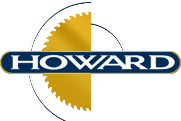Aluminum is an extremely versatile metal in that it is a great candidate for a wide range of manufacturing methods, two of which are extrusion and casting. You might find yourself asking, “What is the difference between extruding and casting of aluminum?” Extrusion is a process by which aluminum billets are forced through a die, resulting in a desired cross section. Whereas, casting is a process in which molten aluminum is poured into a mold and then allowed to solidify. Each method of manufacturing aluminum parts has both its advantages and disadvantages, but both offer a savings over machining the part from a solid by creating a near net shape and reducing machining time. Whether you think you need aluminum extrusions or are considering aluminum castings, you can count on the team at Howard Precision Metals to point you in the right direction.

Extrusion: An Economical Manufacturing Process
Aluminum extrusion is a generally competitive and economical production option especially when dealing with very complex cross-sections. A new design of a custom shape aluminum extrusion can be produced in as little as 8 weeks. Such shapes and features that can be extruded are: press and snap, sliding fits, tongue and groove, self-tapping screw boss holes, hinges, snap-fit joints, flanges, screw ports, anti-skid surfaces, and much, much more. Initial costs of extrusions are attractive as well. Die engineering fees for new custom shapes are much less than when compared to castings. Extruded aluminum shapes are also produced with an excellent surface finish and are typically stronger in comparison. Some products produced by the extrusion process are heat sinks, window and door frames, manifolds, and lighting track equipment. The possibilites are endless. A disadvantage of extrusion when compared to casting is the size constraint. Aluminum extrusions are limited by the size of both the billet and the capacity of the cylinder on the extrusion press. Castings have no such limit and are often used to produce very large items. Even with the size limitations of extrusions, there are still a myriad of applications of which this method of manufacture is the preferred choice.
Aluminum Casting
Aluminum can be cast using any of the available casting methods. Some of these casting methods are continuous casting, investment casting, plaster casting, sand casting, permanent mold casting, and die casting. Additional casting processes such as hot and isostatic pressing, squeeze casting, and lost foam are also possible with molten aluminum. Despite the different names and methods, all casting has one thing in common: Molten aluminum is poured into a mold that makes a pattern when the aluminum is cooled. When compared to extrusion, casting is a much slower process. Seams and mold imperfections can also be present in cast parts. This often requires a secondary process, known as fettling, to be necessary to remove such imperfections by cutting, grinding, or sanding. Nonetheless, casting still has its place in manufacturing. Casting of aluminum is a very common manufacturing method of such products as cookware, small appliance components, or decorative parts. The most common and largest market for aluminum castings is in the automotive industry. More than half of the aluminum used in cars is produced by casting.
Advantages and Disadvantages of Both Casting and Extruding Aluminum
The process of casting often has a higher introductory cost than when compared to that of extrusion. However, it can be more economical in high production runs or on parts that require excellent dimensional accuracy. This especially holds true when the shapes are intricate, such as those with non-uniform thicknesses. Though a casting might yield closer tolerances, an extruded shape will be stronger. Also, a casting is likely to contain some porosity while an extrusion has none. In addition the surface finish of a casting will likely require machining, but an Aluminum extrusion’s surface can be used in a finished part assuming the dimensional tolerances created meet the needs of the part. Castings are limited to metals with low melting points, such as aluminum, magnesium, and copper, have higher initial tooling costs, and mold life can be short. Extrusions are a better option in shorter production runs due to lesser start-up costs. Castings, unlike extrusions, are not constrained by sizes. Because an extrusion can only be as large as the billet the extrusion press can contain, the size range is limited. This is not the case with molds for castings. In fact, castings are very commonly used to produce large parts, such as boat propellers or parts of engines. For these products, extrusions are not an option due to the size constraint. Whether considering a casting or an extrusion, it is important to consider all variables of each.
Contact Us Today
Since 1928, the team at Howard Precision Metals has been providing outstanding customer service in the metals industry. Now a 100% aluminum distributor and home to more saws under one roof than anyone in the Midwest, Howard Precision Metals has the knowledge and the equipment needed to provide our customers with the very best products available. With experience serving a wide range of industries such as aerospace, machinery manufacturing, pneumatic and hydraulic cylinders, our team is ready to tackle any aluminum request. For all of your aluminum needs, request a free quote on our website or contact us today at 800.444.0311. #HaveYouSeenWhatWeSaw


